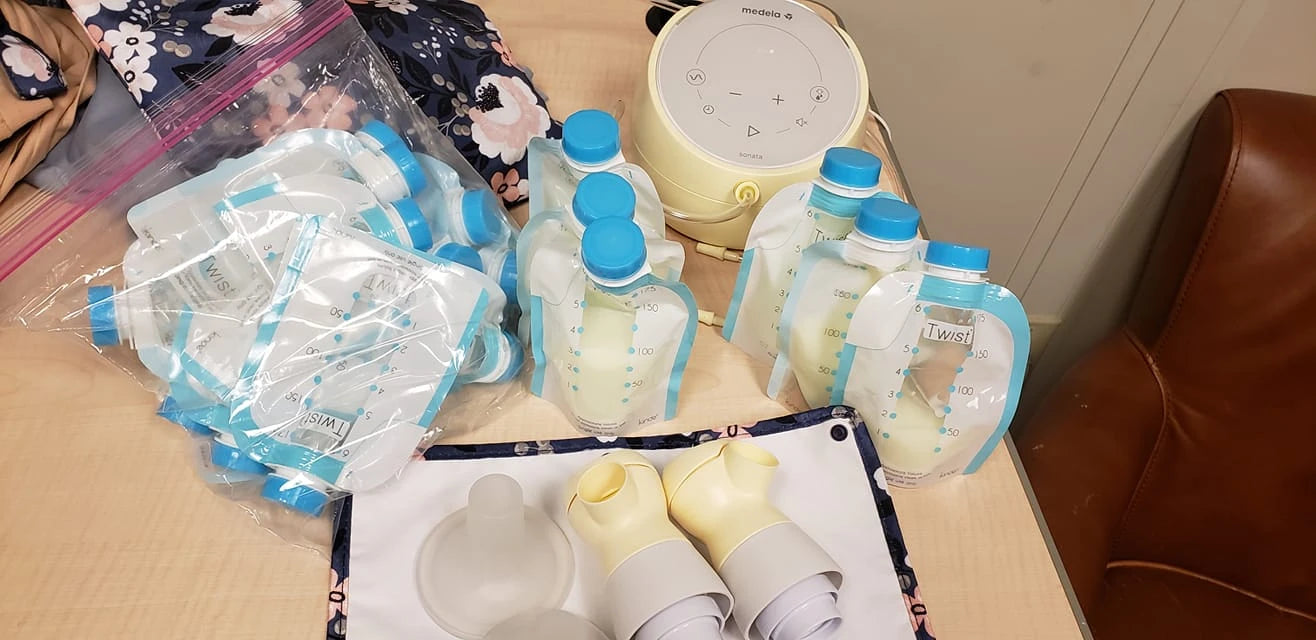Pumping shouldn’t hurt
Our patented BabyMotion technology is the first and only flange that truly mimics your baby’s natural suckling.







Worry-Free Size Guarantee
We know finding the perfect flange size is crucial for comfort and maximizing your output—and it can feel tricky! That's why we created the LacTeck Worry-Free Sizing Guarantee.
Order confidently! If your LacTeck BabyMotion Flange size isn't quite right, we'll happily provide a one-time, absolutely free replacement for a different size within 30 days. We're dedicated to ensuring you achieve the optimal, comfortable fit for your pumping journey.
Note: This guarantee is available for U.S. customers only. International customers, please email us at support@lacteck.com for assistance.
Recommended by IBCLCS
-

LA Lactation
Learn more"I love pumping products that make pumping better! These baby motion flanges by LacTeck can be a pumping game changer!! They come in a variety of sizes for optimal fit."
-

Genuine Lactation
Learn more"Lacteck flanges replace the traditional hard plastic with a firm silicone that cups and seals against the breast with a collapsing window at the bottom to increase stimulation to the nipple. These flanges are popular for being comfortable and allowing faster pumping than traditional flanges. "
-

Pump with Purpose
Learn more"I absolutely love their products and will recommend them for people with elastic nipples or wanting to be more comfortable on your pumping journey. They look like normal flanges but their technology helps bring letdowns mimic nursing. "
Why Moms Choose LacTeck
 |
Other Brands |
|||
Imitates a baby’s natural suckling motion. |

|

|
||
Ultra-soft, flexible silicone that moves with the body. |

|

|
||
Patented moving flange technology. |

|

|
||
Works with most pumps |

|

|
||
Reduces pain and increases output. |

|

|
Size Chart
Use below size chart before ordering because our BabyMotion Flange have a different design from other brands.
If you ordered the wrong size, don't worry, we offer a one-time free new size.
Nipple size before pumping |
BabyMotion Flange Size |
| 10–12mm | 12mm |
| 13–15mm | 15mm |
| 16–18mm | 18mm |
| 19–21mm | 21mm |
| 22–24mm | 24mm |
| 25-27mm | 27mm |
BabyMotion Flange Compatibility
No Adapter Needed 

 Spectra Adapter
Spectra Adapter

 Ameda Adapter
Ameda Adapter

Product Instruction
Download
Other Benefits
-
4th Gen Design
Softer material, ergonomic design, and enhanced durability.
-
Opaque Material
Built for privacy, updated with a semi-transparent material.
-
Safety & Hygiene
BPA-free, food-grade. Safe for both mom & baby. Toxin-free milk collection.
-
Easier to Clean
A simple, one piece design, which means fewer parts to wash.
The Science - why are babies More Effective Than Pumps
During nursing, a baby's tongue stimulates the nipple and compresses the areola. These motions, combined with suction, maximizes milk expression. These are the motions we achieved with the BabyMotion Flange's unique design so that pumping can feel more natural, like nursing.
FAQs
How to use the BabyMotion Flange?
Which breast pumps are the BabyMotion Flange compatible with?
How to use the BabyMotion Flange with Spectra pumps?
What sizes of BabyMotion Flange are available?
What size of BabyMotion Flange should I get?
Pre-pumping Nipple Size ---------->BabyMotion Flange Size
10-12mm ------------------------------->12mm
13-15mm ------------------------------->15mm
16-18mm ------------------------------->18mm
19-21mm ------------------------------->21mm
22-24mm ------------------------------->24mm
25-27mm ------------------------------->27mm
Why is the BabyMotion Flange so heavy?
How to clean the BabyMotion Flange?
Why does my BabyMotion Flange fall off the connector?
Can I place my BabyMotion Flange in the fridge between pumps?
Can I use coconut oil or other lubricants with the BabyMotion Flange?
Science Of Baby’s Suckle
-
Secure Transactions
Transactions are handled with bank-grade security.
-
Simple Checkout
Our secure checkout is quick and easy to use.
-
Get In Touch
Have questions? Get in touch with us at any time.










